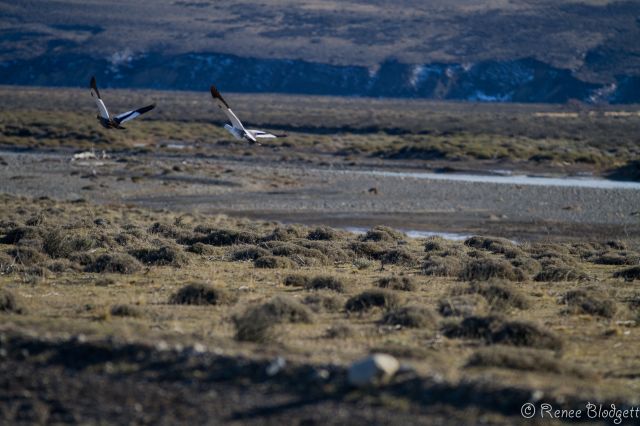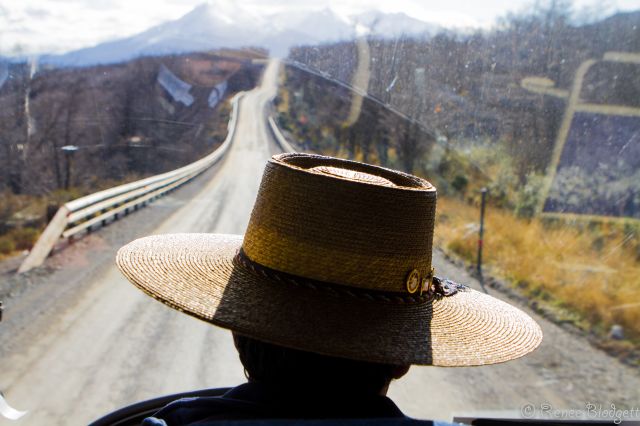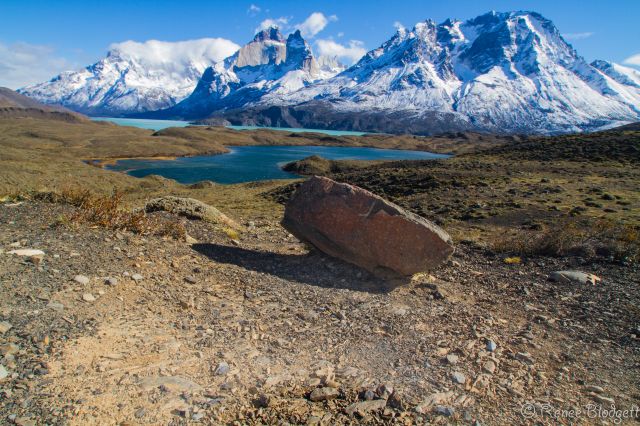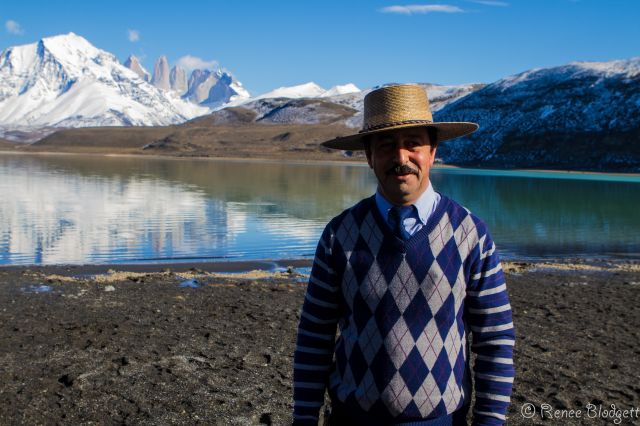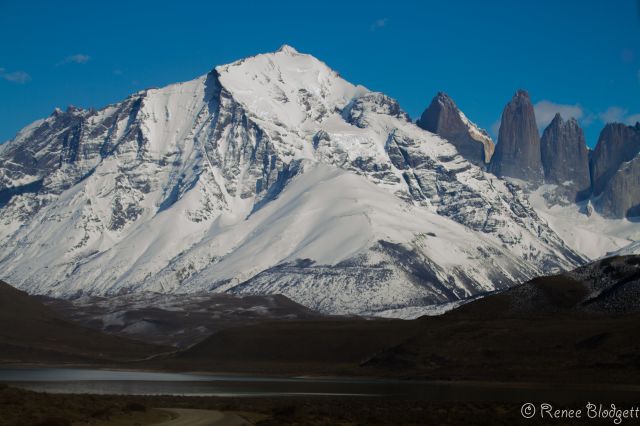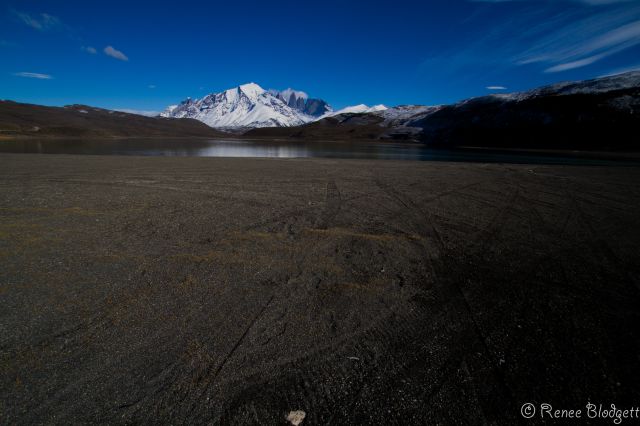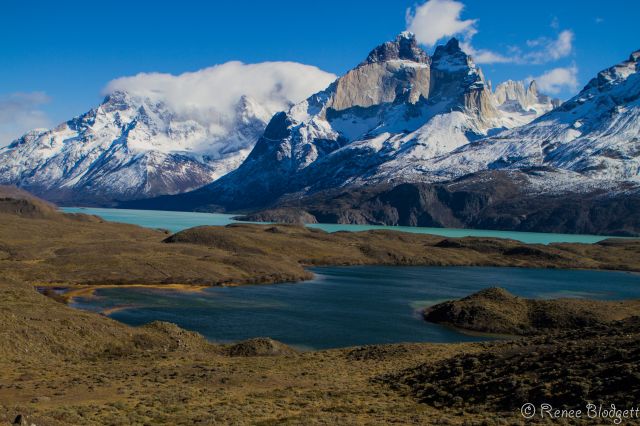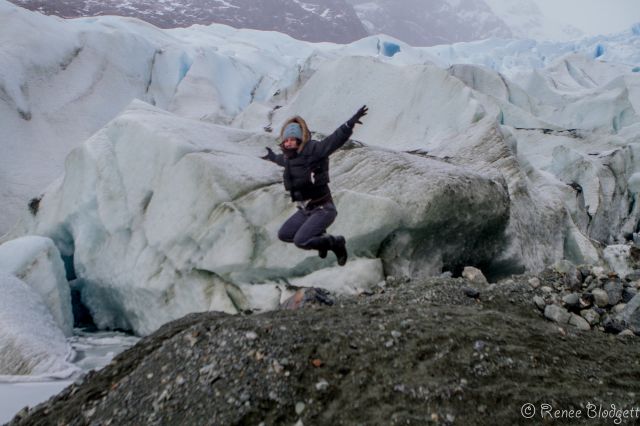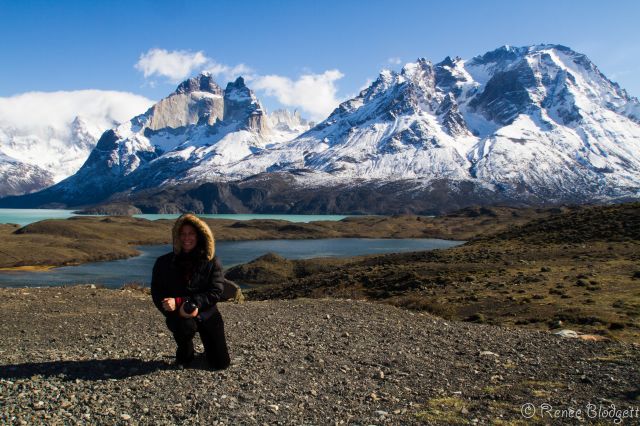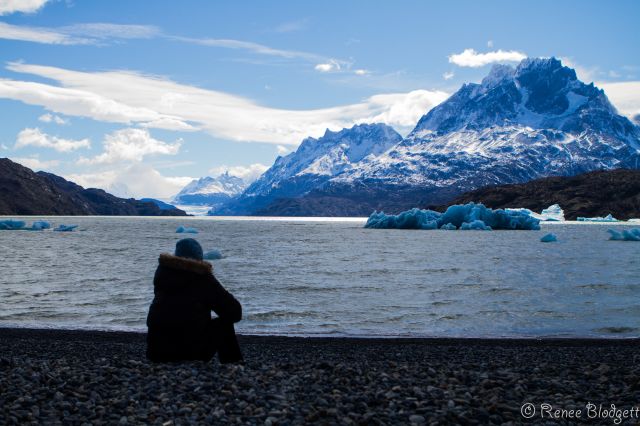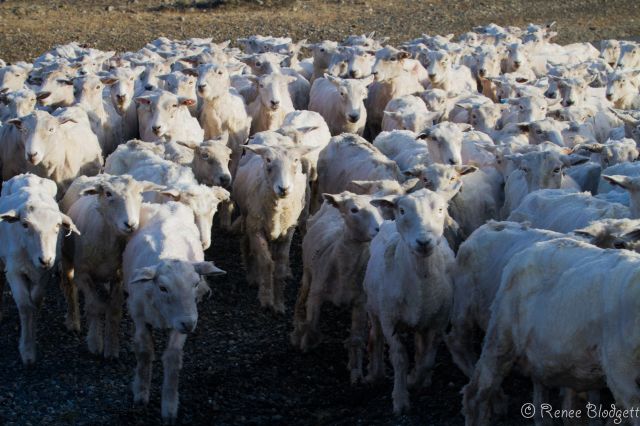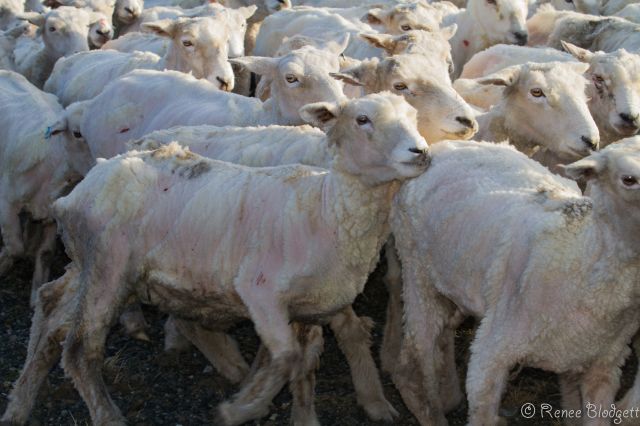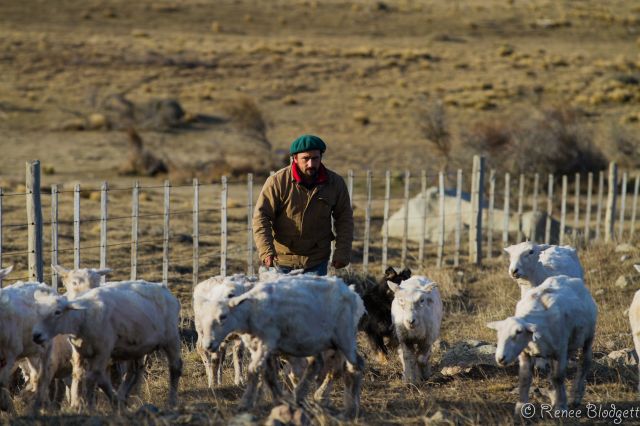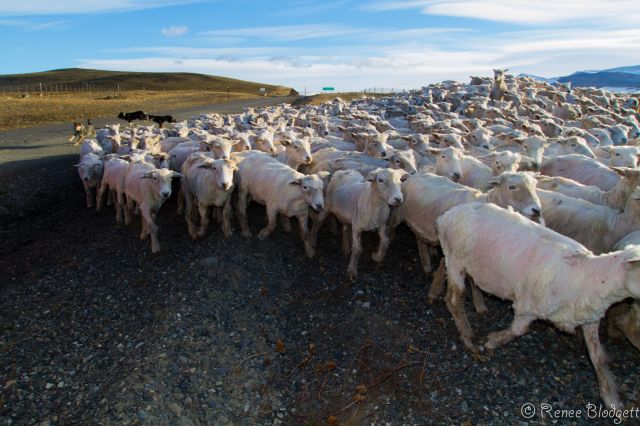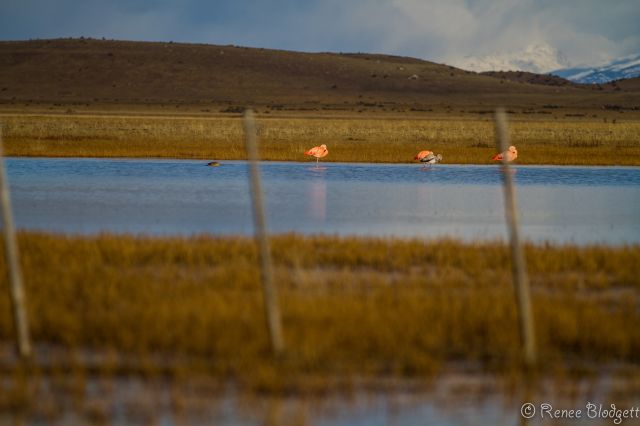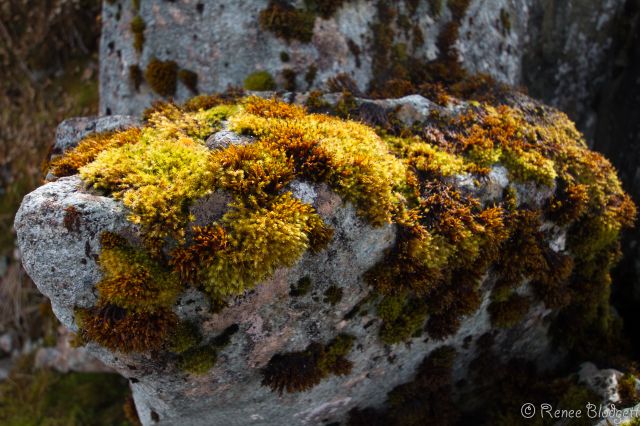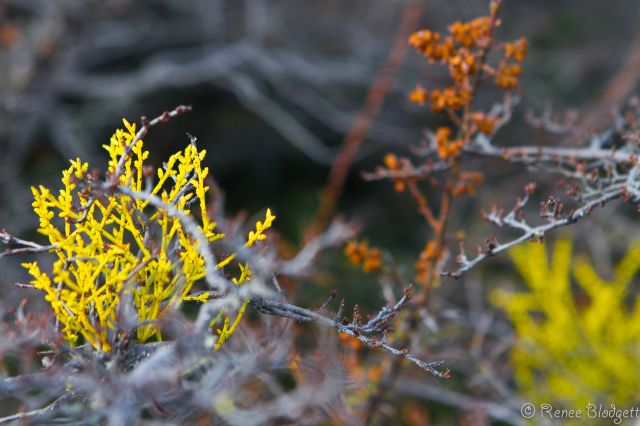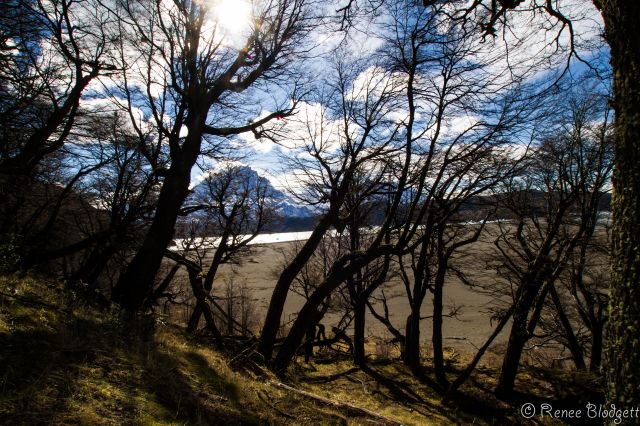The birds in my left peripheral view flying above the somber but pretty caramel and soft saffron vegetation reminded me that I was a long way from home. It was cool, not cold and we had been driving for only a couple of hours – while I was happy for the rest after little sleep the night before, I was also eager to get out and explore even if exploring meant only saying hello to a bird or two, or a mountain or go, or a glacier or two. You get the idea! It was Chile after all and the more I grew to love her, the more I reflected on why it took me so long to explore South America.
As my guide and translator Enrique’s Spanish trailed in the background, I sat back with my feet up in the air on the solo bar that separated me and our driver Costa, not much more than his wide rimmed straw hat in my immediate sight.
Soon, we disembarked and I breathed in the Almirante Nieto (aka Granite Black Summit Mountain in English). While I didn’t climb it, I was part of “it” and its connection to its adjacent infamous Towers of Paine. While I was not in Patagonia to accomplish any “peak” or “mountain” goals, it should be said that some do travel here to hike to this mountain’s impressive top.
Almirante Nieto was the first mountain climbed in Torres del Paine National Park in 1937 by German climbers Hans Teufel and Stefan Zuck from Bavaria. These brave men reached the summit east by climbing the northeast edge in front of the three Towers of Paine, not an easy task. Almirante Nieto Mountain, with an elevation 2,670 meters, is a seven-day climb in total. I showed up (so to speak) to do some climbing and some hiking and to take in more than a view, yet I wasn’t prepared for nor had the time for a seven day intensive climb that required more training and gear than my whimsical decision to fly to Patagonia with so little notice could fathom. Below, what to expect if you really take it on.
There are other ways to take on this journey of course without having to hike and spike. If you’re in shape, have the time and the money and want to the climb, then by all means, DO IT!
This trip was about tranquility for me and being present with Chile’s insanely beautiful nature each step of the way. Below, our driver Costa poses for me in front of those infamous magestic peaks.
We were incredibly lucky to see some of the views we experienced with such clarity. Says Enrique who has been in and out of the park umpteen times over a decade, “any idea how rare it is to get these unprecedented views of the peaks?” as he shakes his head. No we didn’t, but my photos speak for themselves.
Before I was greeted with such tranquil moments however, there is much more to report en route. Prior to the 5+ glacier views, which included views from Gray Lake inside Torres Del Paine National Park (above), we ran into a herd of sheep, driven by a sheep farmer who was trying to move a large flock of pregnant and shaved females into one location. No doubt, we were a distraction! Alsemo was the herder’s name and we encountered his herd not far from Cerro Castillo, a small town along Route 9 North.
We learned that all of the sheep were pregnant and slated to have babies within a month. In addition to sheep, we witnessed condors (some can get up to 9 feet long) and guanacos once we entered the park. The land is apparently good for sheep farming because of the abundance of coiron (yellow grass), which means the sheep don’t consume a lot of fat in their diet. The result? Lean meat. Enrique informs me as we listen to the bahh’ing sheep pass us by that nearly all the meat in Chile is organic since they do not give animals hormones. America could learn a lot from Chile’s healthy farming practices.
Stunning landscape coming out of Torres Del Paine National Park. While flamingos are not abundant, you will see them from time-to-time as you drive through the park.
Lichen and rocks just outside the park.
Looking through the trees during a walk through the park as I made my way towards Gray Lake on an early afternoon.
Photo credits: Almirante Nieto from http://svpatagonia. com. All other photos Renee Blodgett. For more coverage on Chile, check out Best of Chile, Best of Patagonia and Travel to Chile.

Renee Blodgett is the founder of We Blog the World. The site combines the magic of an online culture and travel magazine with a global blog network and has contributors from every continent in the world. Having lived in 10 countries and explored nearly 80, she is an avid traveler, and a lover, observer and participant in cultural diversity.
She is also the CEO and founder of Magic Sauce Media, a new media services consultancy focused on viral marketing, social media, branding, events and PR. For over 20 years, she has helped companies from 12 countries get traction in the market. Known for her global and organic approach to product and corporate launches, Renee practices what she pitches and as an active user of social media, she helps clients navigate digital waters from around the world. Renee has been blogging for over 16 years and regularly writes on her personal blog Down the Avenue, Huffington Post, BlogHer, We Blog the World and other sites. She was ranked #12 Social Media Influencer by Forbes Magazine and is listed as a new media influencer and game changer on various sites and books on the new media revolution. In 2013, she was listed as the 6th most influential woman in social media by Forbes Magazine on a Top 20 List.
Her passion for art, storytelling and photography led to the launch of Magic Sauce Photography, which is a visual extension of her writing, the result of which has led to producing six photo books: Galapagos Islands, London, South Africa, Rome, Urbanization and Ecuador.
Renee is also the co-founder of Traveling Geeks, an initiative that brings entrepreneurs, thought leaders, bloggers, creators, curators and influencers to other countries to share and learn from peers, governments, corporations, and the general public in order to educate, share, evaluate, and promote innovative technologies.

